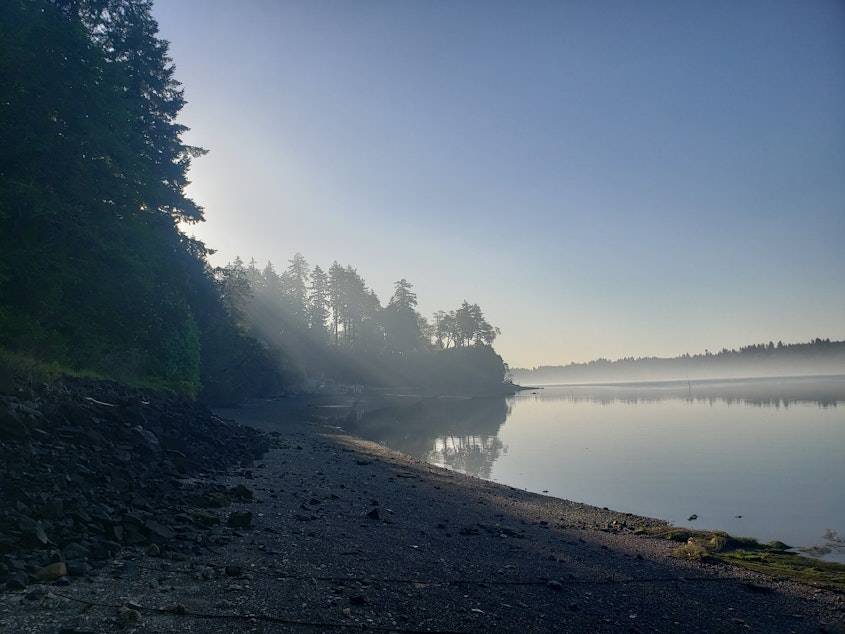Spring heatwave prompts emergency shellfish-safety rule

An unusual mid-May heatwave has led Washington state officials to put emergency measures in place to protect shellfish consumers from bacteria that thrive in warm water. Those measures don’t usually go into effect until July.
Following a four-day wave of record-breaking springtime heat, the Washington Department of Health has banned commercial shellfish harvesting anywhere local water temperatures exceed 70 degrees. In areas at highest risk of disease outbreaks from the bacterium called Vibrio parahaemolyticus, the ban kicks in when water temperatures pass 66 degrees.
On Wednesday, the department also required shellfish farmers to chill their harvest within as little as one hour, depending on the water temperature at the time of harvest.
That’s the preferred method used to stop the growth of Vibrio parahaemolyticus, a naturally occurring microbe in Northwest waters and a close relative of the bacterium that causes cholera.
“Our best tool is just ice, ice, ice,” said shellfish farmer John Adams, who raises oysters and clams on Little Skookum Inlet near Shelton. “Once that shellfish comes out of the water, get it on ice immediately and keep it on ice.”
Shellfish are filter feeders, sucking in seawater and squirting it out after straining it of its nutritious algae. Once a clam or oyster is harvested, water stops cycling in and out of its body, allowing bacteria a chance to proliferate to potentially harmful levels.
Sponsored
“We have decided to enact the Emergency Rule tomorrow as a precaution to avoid illnesses,” the Department of Health notified the state’s shellfish growers on Tuesday.
Washington state is the nation’s top producer of farmed clams, mussels, and oysters, with about $200 million in annual production.
Adams said the emergency rule won’t affect his shellfish operation, which already cools clams and oysters below 50 degrees in under an hour.
“I think they're being a little bit overly cautious, but this is an OK area to be overly cautious in,” Adams said. “I don't know that it was completely warranted, but I don't mind it because the bottom line is, all of our aims are lined in the same direction — providing safe food.”
The Centers for Disease Control and Prevention has estimated that 80,000 people in the United States get sick annually with vibriosis, mostly from eating raw or undercooked shellfish, and 100 people die from their infection.
Sponsored
Despite the increased risk of Vibrio outbreaks, shellfish growers and consumers did catch a lucky break with this week’s heatwave.
It arrived during a week with modest low tides.
Whenever there’s a full moon or a new moon, the Northwest gets especially strong tides: higher high tides and lower low tides.
But on the weeks in between, tides move a lot less water around, which may have saved many intertidal creatures’ lives this week.
Most shellfish were still underwater during the hottest afternoons. Air temperatures soared 20 degrees above normal, while water temperatures changed much less.
Sponsored
“Air temperature is really the problem for intertidal things. It's when they're exposed to air that generally causes the problem,” said Emily Carrington, a biologist at University of Washington’s Friday Harbor Labs on San Juan Island.
“The heat came at a time when the tides were a bit higher and most of the organisms were tucked into their cool little bed, so to speak,” Carrington said.
It was a different story in 2021.
A record-shattering heatwave combined with the lowest tides of the year to expose and kill millions of shellfish in Washington and British Columbia.
The extreme summer heat also led to an increase in vibriosis cases, according to the Washington Department of Health, with symptoms including abdominal pain, diarrhea, vomiting, headache, and fever.
Sponsored
The May 2023 heatwave, with highs in the low to mid-90s in much of Western Washington for four days, did not approach the triple-digit temperatures or lethal impacts of two previous heatwaves in 2021 and 2022.
Heatwaves are coming more frequently and more fiercely around the world as atmospheric pollution keeps warming the global climate.




